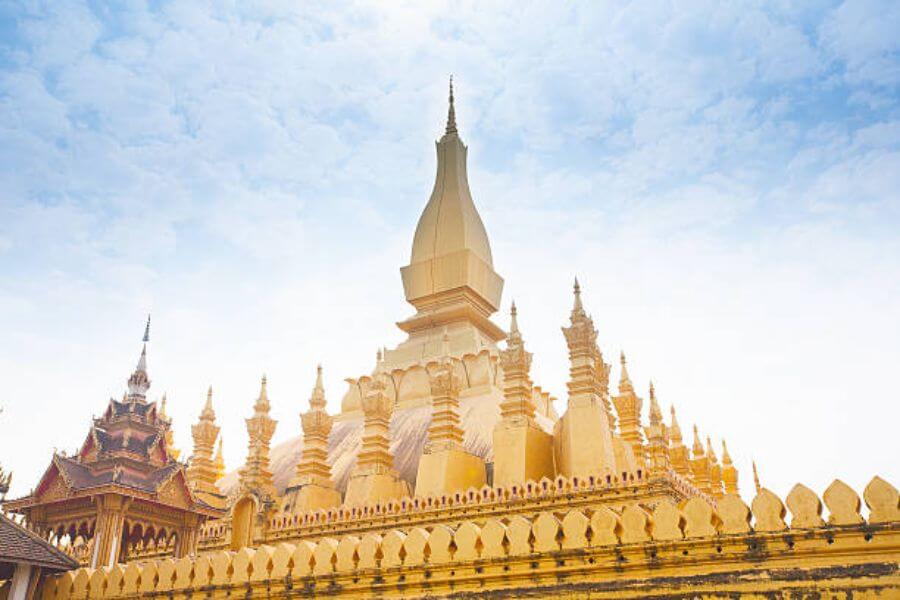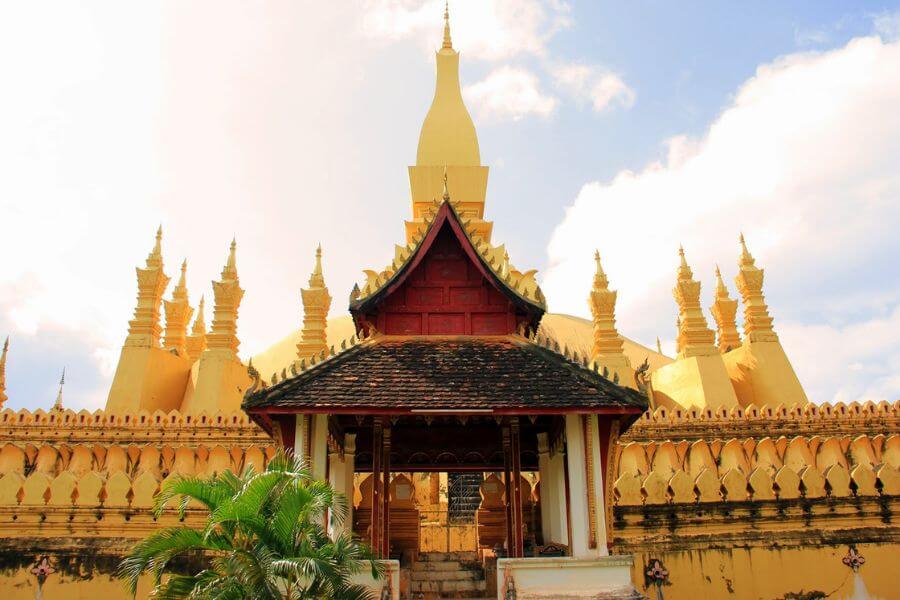Pha That Luang is a Buddhist stupa located in Vientiane, the capital city of Laos. This gold-covered monument is a national symbol of Laos and is considered to be one of the most important religious and cultural landmarks in the country. The stupa is not only a significant religious site for Lao people but also a major tourist attraction. In this outline, we will explore the history, architecture, cultural significance, and visitor experience of Pha That Luang.
Historical Background of Pha That Luang
The origins of Pha That Luang are not entirely clear, but it is believed to have been constructed during the Khmer Empire in the 3rd century. The stupa was initially a small structure made of wood and was later renovated by King Ashoka of India in the 3rd century BCE, who added stone and brick to the structure. In the 13th century, the stupa was destroyed by an invading army, and it was not until the 16th century that King Setthathirath of the Lan Xang Kingdom rebuilt the stupa in its current form.
Since then, the stupa has undergone several renovations and restorations, with the most significant one taking place in the 1930s when the French colonial government of Laos restored the stupa to its original form. Today, Pha That Luang is considered to be a symbol of Lao nationalism and is an important religious and cultural site for both locals and tourists.
Pha That Luang's Architecture and Design: Exploring Laos' Iconic Stupa
Pha That Luang's distinctive golden stupa is an impressive architectural feat, standing at a height of 45 meters and surrounded by smaller stupas and walls. The stupa's base is rectangular and is adorned with intricate carvings and motifs depicting various Buddhist themes.
The stupa is topped with a spire that is decorated with several parasols, a symbol of royalty and sovereignty in Buddhism. Inside the stupa, there are several chambers that house Buddhist relics, and visitors can climb up to the top of the stupa to enjoy a panoramic view of Vientiane.
Pha That Luang's Cultural Significance
Pha That Luang plays an essential role in Lao culture and society, as it is considered to be a national symbol of Laos and an important religious site for Buddhists. The stupa is the venue for several festivals and events, the most significant of which is the annual Boun That Luang festival, which takes place in November and attracts thousands of visitors from all over Laos and neighboring countries.
During the festival, the stupa is illuminated, and there are parades, processions, and traditional performances. Pha That Luang is also an important destination for pilgrims who come to pay their respects to the relics inside the stupa and seek blessings for good luck and prosperity.
Tourism and Visitor Experience
Pha That Luang is a popular tourist destination, and visitors can easily access the stupa from the Vientiane city center. The site is open to the public from early morning until late afternoon, and visitors are required to wear appropriate clothing and remove their shoes before entering the stupa.
Inside the stupa, visitors can explore the chambers and view the relics, and climb up to the top of the stupa for a panoramic view of the city. There are also several souvenir shops and restaurants around the stupa that cater to tourists.
Preservation Efforts of Pha That Luang
Pha That Luang is a historic site that requires ongoing preservation efforts to ensure its continued existence for future generations. The stupa faces threats from both natural and human causes, including erosion, weathering, and pollution. In recent years, several initiatives have been launched to preserve and protect the site. One of the primary conservation efforts is the ongoing restoration work on the stupa itself. The restoration work is aimed at repairing damage caused by erosion, weathering, and other factors. The restoration work is carried out using traditional techniques and materials to ensure that the stupa's original character and appearance are preserved.
In addition to the restoration work on the stupa, there are several other initiatives aimed at preserving Pha That Luang. For example, efforts are being made to improve the drainage system around the site to prevent water damage. There are also plans to improve the site's visitor facilities, including better signage and educational materials. Another important aspect of preservation is education and awareness-raising. The Lao government and several NGOs have launched educational programs aimed at raising awareness about the importance of Pha That Luang and other historic sites in Laos. These programs are aimed at both locals and tourists and seek to promote responsible tourism and conservation practices.
Preservation efforts at Pha That Luang are crucial to ensuring that the site continues to serve as a symbol of Lao culture and history for generations to come. These efforts involve ongoing restoration work, improvements to visitor facilities, and education and awareness-raising programs. By working together, the Lao government, NGOs, and local communities can ensure that Pha That Luang remains a cherished and well-preserved part of Lao heritage.
Whether you're a pilgrim seeking spiritual enlightenment or a tourist looking to experience the beauty and majesty of Southeast Asia, Pha That Luang is a destination that should not be missed when you are on the Laos tour.




